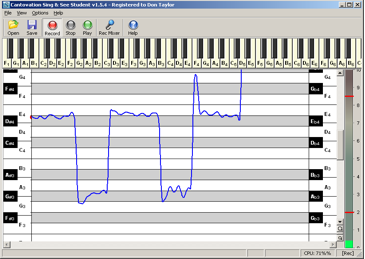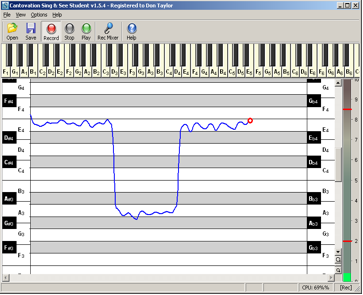This is a demo of how I use Sing&See in practice to help me work on a pitch problem.
Here, after a piano cue, I am singing a fifth interval, from A3 to E4 (actually the second two notes in the song “Edelweiss”), and the problem I have is that I sing them flat. To me, at the time, they sound in tune, but if I listen to the audio I don’t like what I hear.
The trace clearly shows that I was singing about a quarter-tone flat.

Original pitch trace, showing flat fifth
My teacher (Andrew Foan) gave me some valuable advice: don’t try to artificially raise the pitch of your voice – but try even harder to get more resonance by making more high-up space with your soft palate, and give plenty of support from below. Repeating the same exercise, trying my hardest to do what he said, gave the result below.

Improved pitch trace after paying attention to support
It still sounds the same to me when I sing it, but the trace shows that the pitching is correct. Thanks to Sing&See, I now know how to correct my problem, and to make sure my practice will succeed. This is a big breakthrough for me.
Don Taylor.
Hampshire, UK. November 2012

